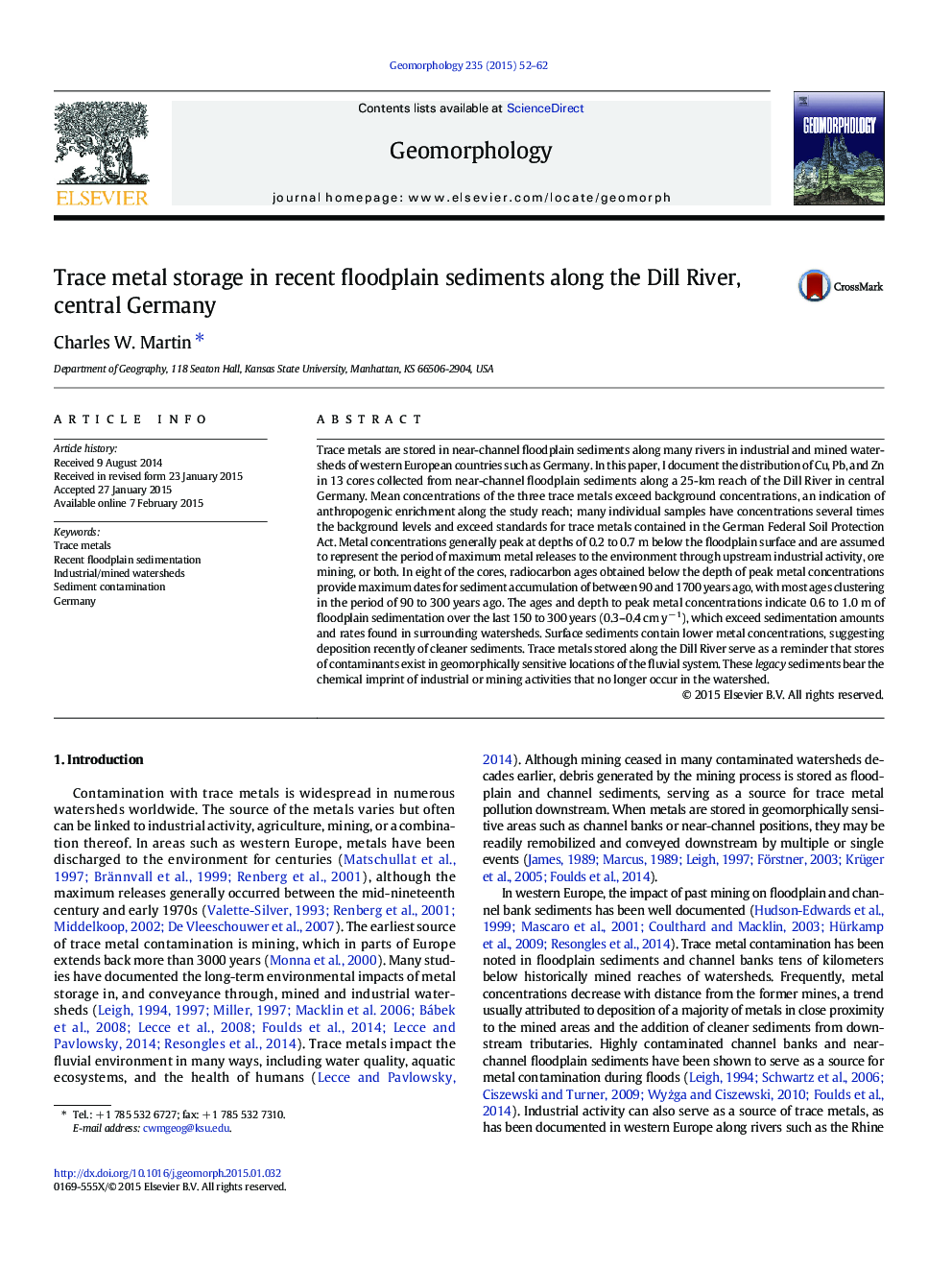| Article ID | Journal | Published Year | Pages | File Type |
|---|---|---|---|---|
| 4684236 | Geomorphology | 2015 | 11 Pages |
•Trace metal concentrations exceed non-anthropogenic concentrations.•Trace metal concentrations peak at depths of 0.20–0.70 m.•Peak concentrations correspond to maximum metal releases upstream.•Rapid floodplain sedimentation over last 150 to 200 year.•Stored trace metals are potential source of future downstream contamination.
Trace metals are stored in near-channel floodplain sediments along many rivers in industrial and mined watersheds of western European countries such as Germany. In this paper, I document the distribution of Cu, Pb, and Zn in 13 cores collected from near-channel floodplain sediments along a 25-km reach of the Dill River in central Germany. Mean concentrations of the three trace metals exceed background concentrations, an indication of anthropogenic enrichment along the study reach; many individual samples have concentrations several times the background levels and exceed standards for trace metals contained in the German Federal Soil Protection Act. Metal concentrations generally peak at depths of 0.2 to 0.7 m below the floodplain surface and are assumed to represent the period of maximum metal releases to the environment through upstream industrial activity, ore mining, or both. In eight of the cores, radiocarbon ages obtained below the depth of peak metal concentrations provide maximum dates for sediment accumulation of between 90 and 1700 years ago, with most ages clustering in the period of 90 to 300 years ago. The ages and depth to peak metal concentrations indicate 0.6 to 1.0 m of floodplain sedimentation over the last 150 to 300 years (0.3–0.4 cm y− 1), which exceed sedimentation amounts and rates found in surrounding watersheds. Surface sediments contain lower metal concentrations, suggesting deposition recently of cleaner sediments. Trace metals stored along the Dill River serve as a reminder that stores of contaminants exist in geomorphically sensitive locations of the fluvial system. These legacy sediments bear the chemical imprint of industrial or mining activities that no longer occur in the watershed.
